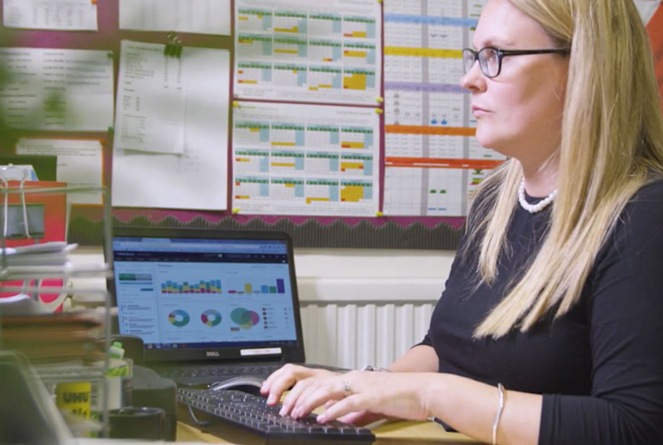Introduction
Domestic abuse and domestic violence are often interchanged terms, and it is not always clear, without further questioning, what is meant when professionals use them. It has become apparent that the term ‘domestic abuse’ can be seen as a lower-level form of abuse and not as serious since it does not have to be physical.
Different Types of Abuse
Many forms of domestic abuse are just as serious as domestic violence. To identify signs of domestic abuse and how to support children experiencing it, it is important to understand the different types of abuse and what each term means.
Domestic Abuse
This does not have to be physical, and its effects are felt by everyone exposed to the abuse. Following on from the Domestic Abuse Act of 2021, this can be used as an over-arching term, emphasising that domestic abuse is not just physical or sexual violence but can also be emotional, coercive, controlling, and economic abuse.
Domestic Violence
This is closely associated with physical and sexual violence by one partner against another.
Coercive control is where the perpetrator subjects a partner, a spouse, or a close relative to a sustained pattern of controlling, threatening or humiliating behaviour. It can also involve creating a dependence on the abuser.
Economic and Financial Abuse
This abuse impacts a person’s financial freedom and controls their actions. This can include having sole control of the family income, preventing the victim from claiming welfare benefits and not allowing the victim access to a mobile phone/transport/utilities, amongst other things which control the victim.
It is not always clear to a person living in an abusive relationship that it is abusive, and they cannot or do not recognise the signs.
Children Are Victims of Domestic Abuse Too
Before the Domestic Abuse Act of 2021, children experiencing any form of domestic abuse could be overlooked even though they were experiencing and affected by it. These concerns were frequently categorised as emotional abuse or neglect rather than direct abuse. Any actions put in place were usually focused on the parent changing their behaviour or parenting to protect their children rather than putting in place any direct work with the child.
The Domestic Abuse Act of 2021 has tried to rectify this fact. The Act now recognises that ‘abuse can impact on a child who sees or hears or experiences the effects of the abuse, and it treats such children as victims of domestic abuse in their own right where they are related to or under parental responsibility of either the abuser or the abused.’
The Child Safeguarding Practice Review Panel
The Child Safeguarding Practice Review Panel reviews cases where children have died or been seriously harmed, and abuse is known or suspected.
Their most recent panel (September 2022) stated that in 2020, domestic abuse was a factor in over 40% of the cases notified to the panel. Its annual report (September 2022) highlighted this as a key work area. The panel’s national review into the murder of Arthur Labinjo-Hughes and Star Hobson demonstrated the prominence of domestic abuse. The panel also showed there was a lack of research on the lasting impact of domestic abuse on children, and there is also a lack of focus on how children can recover from the abuse they have experienced and the support they need to do this. What is clear is that domestic abuse can impede a child’s need for safety, and according to the review, the negative short-term impacts included:
- Emotional
- Psychological and behavioural impacts on their relationships
- Education
- Sense of isolation
- Sense of loss
- The risk of physical harm
Furthermore, evidence in the review showed that multi-agency works only happened in’ high-risk’ cases where no response was linked to parents, and there wasn’t a cohesive response for supporting children.
The review also found that when considering adolescents, domestic abuse was regularly seen as ‘in the past’, and professionals could not see how those early traumatic experiences were still potentially impacting them.
Children’s Voices and Their Experiences
As a result of the review panel, it became clear that children’s voices were not always heard and that professionals rarely spoke to them directly because they were perceived to be ‘well’. It was suggested that this was because the children were calm and not in a ‘state of distress’.
On the other hand, where professionals worked directly with children and supported them, there was a significant positive impact.
The 4 Core Principles
The review panel have identified 4 core principles which should underpin practice approaches when working with children, young people, parents, and wider family who have experienced domestic abuse.
1. Domestic Abuse Informed Approach
A domestic abuse-informed response names the source of the harm and describes the behaviours of the abuser and the impact on adults and children, seeing both as direct victims who are entitled to support. As domestic abuse can take many forms and involves a range of abusive and coercive behaviours that can occur in all types of relationships, services working with children require a detailed understanding of abusers’ use of controlling and coercive behaviours and the consequent generalised and pervasive fear for adult and child victims. They must understand these components as central to domestic abuse. They also need to distinguish the difference between domestic and parental conflict.
2. Trauma-Informed Approach
Trauma-informed means responding in a non-judgmental, non-blaming and strengths-based way that prioritises building trusting relationships and avoids re-traumatisation. Services emphasise physical and emotional safety, trust, transparency, peer support and collaboration (working with not doing too). They promote empowerment and choice. Recognition of cultural, historical and gender differences. For those who harm – this approach ensures the whole person is responded to without collusion around their abusive behaviours.
3. Intersectional
This is more than simply recognising children and adults’ diverse characteristics and identities. Understanding how these intersect and lead to discrimination and oppression is essential. This approach to domestic abuse means services must seek to understand the unique experiences of each family, including their histories, characteristics, and current context. To see these in the context of unequal societal structures, including racism, sexism and poverty. It requires practitioners to be aware of their values, biases and judgement and to have safe spaces to reflect.
4. Whole Family
There needs to be an understanding of what family means for the child. Children will likely have strong or complicated feelings about their abusive parent/s and may live in permanent fear and/or anxiety. A whole-family approach does not separate the abusive behaviours of the parent from the impact on the children. It considers the parenting of the abuser as well as the impact of their abuse on the non-abusing parent and their care for the children. Working with the whole family provides direct and specialist holistic support to adult and child victims. This is alongside specialist whole support to those causing harm that challenges their abusive behaviours and focuses on behaviour change while prioritising the safety of child and adult victims/survivors.
In Conclusion
In conclusion, understanding the nuances of domestic abuse and its profound effects on children is paramount in ensuring their safety and well-being. The Domestic Abuse Act of 2021 marked a pivotal moment in recognising children as direct victims of such abuse. The Child Safeguarding Practice Review Panel’s insights underscore the urgency of adopting a holistic approach, guided by four core principles, to address this issue comprehensively. Listening to children’s voices, even when they may not outwardly express distress, is essential for effective intervention. As a society, we must commit to these principles to break the cycle of abuse and provide children with the nurturing and secure environment they deserve.
Support From Our Experts
Our comprehensive training programs are meticulously designed to help you achieve exceptional pupil attainment holistically. By focusing on safeguarding, well-being, and learning, we empower education leaders like you to build an environment where safety, health, and education thrive.
Together, we can work to safeguard children against the effects of domestic abuse and domestic violence.


/Primary%20school%20.jpg?width=2000&name=Primary%20school%20.jpg)








.png?width=940&height=788&name=Lingfield%20College%20Case%20Study%20(5).png)
-1.png?width=1000&height=833&name=National%20Association%20of%20Head%20Teachers%20(3)-1.png)
-3.png?width=1080&height=1080&name=Untitled%20design%20(10)-3.png)







